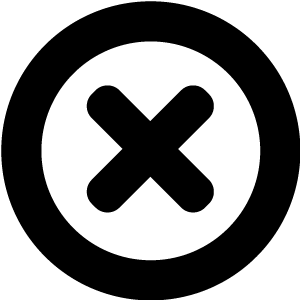
Are you looking to create a newsletter?
But maybe you still have questions re technology, design and/or creation of newsletters?
Hop on the phone with one of our digital publishing consultants and get customized advice that will walk you through how you can get a newsletter created and published in less than 30 days.
Readz brings together technology and expertise to help you launch top-performing content.
NO COMMITMENT REQUIRED - IT'S FREE !

INSTANT, EASY
DIGITAL PUBLISHING
TRY FOR FREE
How To Write A Newsletter
How To Write A Newsletter
A step by step guide to making better digital newsletters with better results.
Contents:
Start publishing online newsletters like Deloitte, IBM, and Nike.
Get a demo of Readz today - and never look back.
GET A DEMO
Introduction to newsletters
Introduction to newsletters
Newsletter definition:
Newsletter definition:
Newsletter format
Newsletter format
We typically see three formats of newsletters:
Print newsletters
The more traditional way of distributing newsletters. Some people do like these tangible, physical formats, but on the other hand, distribution and production can be costly. Digital formats also surpass print newsletters in call-to-actions and result tracking. And there is the environmental aspect as well, of course.
E-newsletter or email newsletters
Mostly these are a continuous listing of content or summaries of content with links to the original articles. Email newsletters are mainly used for shorter bulletins, or to promote an online interactive newsletter, or other online content such as blog posts from various sources.
Online, interactive newsletters
These are an online resource where readers can read the full content and articles of a newsletter. If you have sufficient material, this format will give you likely the best results. Plus, you will have the freedom to brand and design your newsletter to fit your organization's standards.
How to write a newsletter?
How to write a newsletter?
A quick way to lose your readers’ interest is to include irrelevant content. The best newsletters are not sales-driven; they are rich with fact-driven information and tell stories.
Content-audience fit for great newsletters
Content-audience fit for great newsletters
Decide upfront what kind of topics your newsletter will contain. What type of content will hold the interest of your audience, what items do you want to put forward, and what are the must-have topics in your newsletter? Use audience insights to get informed and craft content they care about and benefit most.
Marketing content.
The rise of content marketing in the last decade has demonstrated the value of educating audiences rather than selling to them.Educating, not selling, is undoubtedly even more critical in newsletters. Customers and employees alike are bombarded with commercial messages and see right through those. A newsletters value and authority will drastically rise if the information is clear, complete, and facts-based.
Storytelling.
Newsletters are prime candidates to use for storytelling
. Including not just facts but also human stories and achievements can drastically increase the appeal and effectiveness of newsletters.
For example, a chemical company highlighted in its employee newsletter the heroic behavior of some of its employees during a natural disaster impacting one of their plants.
Pro-Tip
Make sure to distribute your selected topics to all stakeholders, and get feedback and approval before starting.
Because of the high volume of newsletters, it's not an easy task to stand out. An excellent way to distinguish yourself is by establishing a signature voice. You can achieve this through phrasing, punctuation, slang, wit, or humor.
And while you want to keep your actual articles highly informative, there is always room to create your voice in the editorial or the table of contents summaries!
Establish a voice
Establish a voice
Table of Contents - TOC
Table of Contents - TOC
The hallmark trait of a valid email newsletter is information. Newsletters should be packed with valuable information but also formatted in a way that is not overwhelming to readers.
Offer readers a table of contents, with the option to view content in more detail. Links are excellent for newsletters; interested readers can click through for more info, while others can skim by. The newsletter shouldn’t be a task to consume. Keep the layout and the content concise and straightforward, and get to the point fast.
Headlines
Headlines
The importance of strong headlines is strongly underappreciated. The subject line can make all the difference in whether readers will read your article or ignore it. Good headlines are clear about the content. They can be engaging, sometimes even intriguing but should never be misleading.
A great intro and outro should follow headlines.
Like the legendary communications guru, Dale Carnegie said: Tell your audience what you are going to tell them, then tell them, and later tell them what you told them.
Goals and call to actions
Goals and call to actions
The best way to go about newsletters is to set clear goals first and foremost. The goal may be to
- drive traffic to your site,
- increase sales,
- boost event attendance, or
- drive donations, among others.
Only after you've established its goals can you identify the content that will help you achieve them and then measure its effectiveness.
The call to action is an essential aspect of high performing newsletters. If you leave readers without the option to take action, that’s what they’ll do: leave.
An excellent newsletter has well-placed calls to action that relate to the surrounding content. Some examples include share buttons, buy buttons, and links to other web pages.
No matter how engaging a newsletter maybe, if the calls to action are difficult to find or click, there's a low chance your readers will convert.
Test your CTAs (and other elements of your newsletter) to get the most out of it.
12 company newsletter ideas
12 company newsletter ideas
It is easily said, “Write a newsletter. Make sure your content is relevant and interesting.” Right. But how do you do that?
Sometimes you need a bit of inspiration for your newsletter content. So here is a list of favorite company newsletter content ideas.
1. Customer stories
Whether your newsletter audience is internal or external, nothing demonstrates the value of what you’re doing as well as the testimonial of an actual customer or user. Add some fresh pictures and some quotes, and this is highly shareable content to help promote your online newsletter!
2. Behind the scenes content
Both customers and colleagues alike are often curious about how things are made or how an organization works. Plus it allows you to put a human face on any of your activities.
3. In the spotlight
You can put a face on who you are as a brand by doing interviews with your employees. Interviews allow you to show not only what they do in your organization but also who they are as a person.
4. Unexpected or refreshing usage of your product or service
Was your product used in an unexpected way? People love surprising stories, and a picture will provide you again with a tremendous shareable asset.
5. Your take on industry news
Probably your industry already has some reputed sources who provide coverage on what is happening. So the need to re-hash this is small. However, your view and reaction to what is happening are so much more relevant and exciting for your audiences.
6. Results and thank you from the CEO
This item speaks for itself. It is always heartwarming to receive praise and get recognition.
7. Top 10 resources
Make a list of super-valuable resources that are important and relevant to your audience. Top 10 lists are always fun and can be helpful.
8. Frequently Asked Questions / Letters to the editor
Frequently asked questions and especially letters to the editor are techniques used traditionally be newspapers. Letters to the editor and answers to questions can be published, and are often not only exciting but are also enticing readers to start engaging as well.
9. Let the experts talk
Most likely, you have some real topic experts - well, bring them together and let them explain a difficult topic or a recent trend or innovation.
10. Welcome to the company
Welcome newly hired people and introduce them to the rest of your staff with a short profile and interview.
11. Event reporting
If you were at an event, be sure to report on your presence there and some trends you picked up.
12. Seasonal
Perhaps the easiest way to do so is by incorporating current events, seasonal changes, and holidays in your newsletter content. It’s good practice to merge the calendar year of activities with your editorial calendar to guide content creation.
Newsletter names
Newsletter names
Are you looking for better newsletter titles? You are probably eager to avoid the typical “October newsletter” kind of name for your newsletter. There are more creative newsletter names out there that might just fit your purpose. Some of these are synonyms; some are a bit more descriptive or creative.
And, maybe some of these newsletter name ideas could be valid candidates for sections titles. Here is our catchy newsletter names list:
Newsletter names list
:
- Brief
- Broadcast
- Bulletin
- Chronicle
- Content
- Current affairs
- Daily
- Digest
- Download
- Editorial
- Feuille
- For the record
- Gazette
- Happenings
- Headlines
- Inside Look
- Journal
- Latest
- Magazine
- Memo
- Monthly
- Newsflash
- Newsroom
- Newspage
- Over the news
- Pamphlet
- Playbook
- Primer
- Report
- Segments
- Sentences
- Snapshot
- Spectator
- Stories
- Updates
- Voice
- Weekly
- Wrap-up
- Words
Marketing your newsletter
Marketing your newsletter
Frequency of your newsletter
Frequency of your newsletter
One of the typical characteristics of a newsletter is its periodicity. There is no golden rule for optimal periodicity. The optimal periodicity mostly depends on your audience, your topics, and, most often, what is the historical or traditionally expected frequency.
While you might be tempted to increase the frequency of your newsletter, very often, your audience will have a current expectation regarding your periodicity. And you will more than likely also have a limit imposed by your capacity to produce and create quality content online.
Most often, you will have weekly newsletters (e.g., for financial newsletters) or monthly newsletters, and quarterly (commonly used for employee newsletters).
An essential rule about periodicity is to communicate upfront the frequency and to stick to it. Send out your newsletter at the same time every day (or same day every week or month) and keep a consistent format. This habit sets an expectation, and subscribers may begin to look forward to it.
TV broadcasters and newspapers widely use this technique. A good example is the New York Times' daily briefing. It arrives every morning at 6 AM with a ‘Good Morning’ headline. This reliability creates an experience; a daily routine, a morning cup of coffee with "the paper."
Promoting your newsletter
Promoting your newsletter
Email marketing
The most common way to promote your newsletter is by email. Yes, we know. It is an email newsletter to boost your digital newsletter. It seems confusing, but in reality, it is not.
Typically email campaigns contain a short intro linking to the first page of your newsletter and optionally, a series of snippets of the stories in your newsletter that link directly to the story. How often should you send emails? Well, every time you published a new newsletter!
You want to pay special attention to the email subject lines since these will largely influence the open rate.
Social media
Of course, beyond that, you can create posts on social media linking to your online newsletter, and some people will create paid advertising.
Measuring the success of your newsletter
Measuring the success of your newsletter
Like all communication activities, it is best to be able to demonstrate a quantifiable impact on the organization, not only ‘soft’ targets such as increased loyalty, awareness, and education.
Here is a list of
measurable newsletter goals
which you can use:
- Subscriber size, measured in numbers of recipients (if you send notifications)
- Audience size, measured in the number of visitors to your online newsletter
- Engagement, measured in page/article visits and reads
- Action, measured by response to call-to-actions
The digital newsletter can reinforce different initiatives at an organization. For example, the benefit of a product or service could be illustrated by showcasing a customer and how they benefited from partnering with the organization. Pageviews and time spent on the page can demonstrate the result, and also the audience’s interest in the topic.
Newsletter sign-up
Newsletter sign-up
So you have spent all the energy, time, and money on creating great relevant content and then distributing it in an online newsletter. Now, you obviously would like as many people as possible actually to receive and read the newsletter.
Possibly you have a predefined audience, e.g., all staff members for an internal newsletter. But often, you might want to entice new people to subscribe to your newsletter.
A good signup form is one of the elements that will help you convert visitors to newsletter subscribers. Don’t fret - a good signup form is not that hard to create. Remember, the amount of people that will sign up is a direct reflection of the strength of your value proposition to that audience.
If the audience-content match is strong, you will sign up a lot of visitors, even with a crappy signup form. That’s just how it is. But a good signup form will increase your conversions with double-digit percentages, and it is not hard, so it is worth doing it.
Here are the elements of a good signup form:
Unsubscribe
If your email newsletter is opt-in, then the unsubscribe option should be easy to find.
Add terms & conditions and privacy policy
Subscribers will often check the use of their contact info. Adding this information will help you get these people on board.
Conclusion
Conclusion
The best newsletters are regularly occurring, brief, and contain high-quality content that stays relevant to the user. Offer aesthetically pleasing and minimal design, and include prominent calls to action. Create attention-grabbing subject lines that appeal to audience interests.
If done well, digital newsletters can be fantastic for staying connected with your audience and increasing conversions.
We hope you enjoyed our guide on 'How to write a newsletter?"
Let us know: what practices work best for your digital newsletter?
This table of contents example is part of a template offered on the Readz platform.
Tell people what the newsletter will offer them
As said above, the strength of your value proposition is the number one reason why people will or will not subscribe to your newsletter. So make sure to add in a clear description of what the newsletter is about: which kind of topics, or news, or if you will offer information or even new releases, etc.
Keep the form short and sweet.
Think about which information is essential and offers real actionable value to you. If you cannot leverage extra details, then don't ask for it. User design studies always show that long, intimidating forms get lower conversion rates.
Simple, attractive design
Keep your sign up form focused on its primary task. The goal is to inform prospective readers what the value is for them and allow them to enter their information quickly. Your design should be functional and aesthetically pleasing.
Offer a sample
You can always add a link to a free sample so people can check your contents.Good forms are short and offer clear design, with a stand-out call-to-action.
What is a newsletter?
What is a newsletter?
This interactive newsletter example is part of a template offered on the Readz platform.
A newsletter is a periodic update or report about relevant topics or activities of a business. Newsletters typically talk about or give more background on multiple issues.
For companies and organizations, a newsletter is typically a long-form piece of content, sent out on a weekly, monthly, or quarterly base. The articles in the newsletter generally are issues that are relevant to the audience at that moment in time. These include news and highlights from the reported period, updates on plans, interviews, a look behind-the-scenes or more in-depth or background information. This type of newsletter is typically in print or online and is advertised through introductory emails.
B2C companies often engage in newsletter marketing. These newsletters are typically shorter and in email format, and are often cataloged as email marketing. Newsletter emails to customers generally are updates on new products that are available, promotions that are being launched, and information to establish the company as a leading vendor.
These days, newsletters are widely accepted as a key component of a communications or content marketing strategy.
What is a newsletter used for?
What is a
newsletter used for?
Businesses and organizations use newsletters to inform and educate their audiences. They communicate news and recent updates, explain the organization’s viewpoint on specific topics, showcase some of the employees or customers, or give more background on products and services.
What is the purpose of a newsletter?
What is the purpose of a newsletter?
Newsletters are typically sent to audiences that have a vested interest in the topics presented, either by interested or by affiliation. They are outstanding instruments to create loyalty, strengthen thought leadership by establishing authority in the space, and create brand awareness in the market.
Related Articles

Internal magazines in a digital world

The definitive guide to creating the perfect employee newsletter
< BACK TO OVERVIEW
Create Content Experiences.
Better. Faster.
Request a Demo
Friendly humans. No commitment required.
STAY IN THE KNOW
Sign up for our newsletter
Actionable advice on how to create better content & design, product updates and occasional other news. All delivered to your inbox.